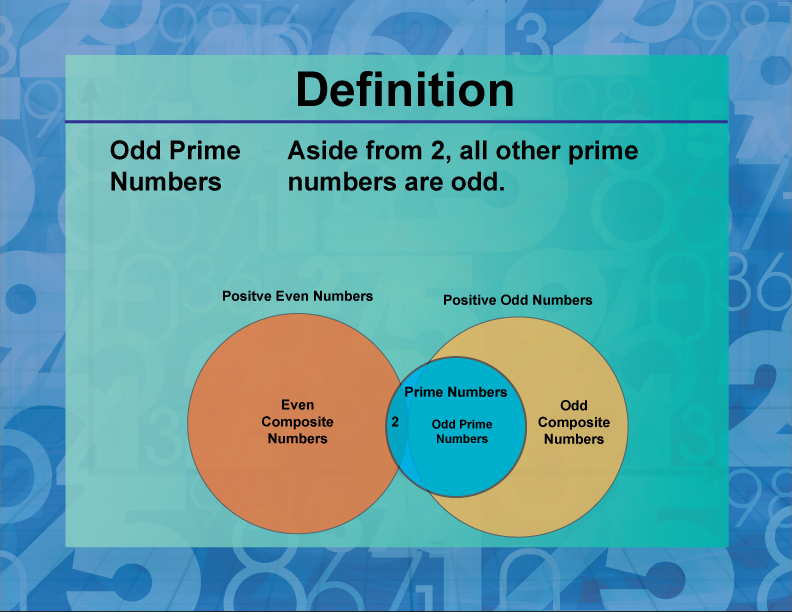
Display Title
Definition--Prime and Composite Properties--Odd Prime Numbers
Display Title
Odd Prime Numbers

Topic
Prime and Composite Numbers
Definition
Except for 2, prime numbers are odd.
Description
Odd prime numbers are a subset of prime numbers, which are defined as numbers greater than 1 that have no positive divisors other than 1 and themselves. The number 2 is the only even prime number, and all other prime numbers are odd. Examples of odd prime numbers include 3, 5, 7, 11, and 13.
Odd prime numbers play a crucial role in number theory and various fields of mathematics. They are used in algorithms for cryptography, particularly in the generation of keys for secure communication. The unique properties of prime numbers, including odd primes, make them fundamental in the study of divisibility, the distribution of primes, and in the formulation of many mathematical theorems. Understanding odd prime numbers is essential for students and professionals working in mathematics and related disciplines.
For a complete collection of terms related to primes and composites click on this link: Prime and Composites Collection.
| Common Core Standards | CCSS.MATH.CONTENT.4.OA.B.4 |
|---|---|
| Grade Range | 4 - 6 |
| Curriculum Nodes |
Arithmetic • Numbers and Patterns • Prime and Composite Numbers |
| Copyright Year | 2021 |
| Keywords | composite numbers, prime numbers, factors, definitions, glossary term |